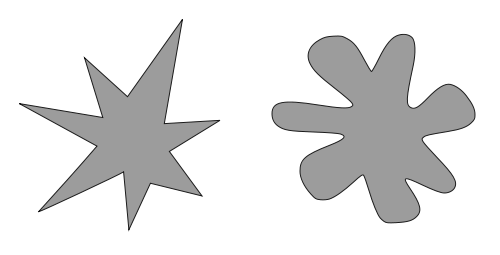
In 2001, USCD psychologist Vilayanur Ramachandran presented these shapes to American undergraduates and to Tamil speakers in India. He asked, “Which of these shapes is bouba and which is kiki?” Around 98% of the respondents assigned the name kiki to the spiky shape and bouba to the curvy one.
Psychologist Wolfgang Köhler had found a similar effect in 1929 using the words baluba and takete. “This result suggests that the human brain is somehow able to to extract abstract properties from the shapes and sounds,” Ramachandran wrote, “for example, the property of jaggedness embodied in both the pointy drawing and the harsh sound of kiki.”
